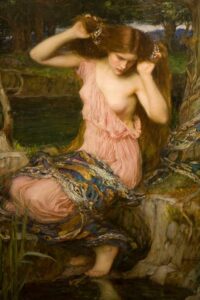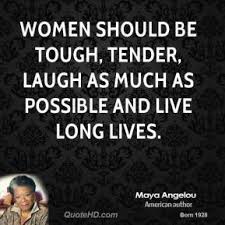“Hey, girl! Break free of the chains of the ‘virgin/whore’ dichotomy and get in touch with your power and sexuality! Um, you’re ultimately going to have to die for it. But you’re OK with that, right?”
This is the way it was in literature (and sometimes in life) for women for a long time. Any spark of power, either of the self-determination kind or the sexual freedom kind, in a female character had to end with the woman in question either returning to her “natural” place in the social order through a complete rejection of what she’d done as evil or, if she refused to repent, through death. This served as a warning to any woman who dared, in real life, to try and follow her literary sister’s journey.
There has always been the dichotomy of Angel and Devil, Virgin and Whore, in the history of women’s roles. Even in our “modern” society, we still look down on women who refuse to suppress their natural, healthy sexuality. We view them as shameful and the new name we have for them isn’t new at all: ho. And god help the woman who is authentically assertive; the name we give her has been around for centuries: bitch.
This history is one reason why the romance genre is so ground-breaking and something we would do well to keep in mind as we create our heroines. But to get where we are, we had to break free from where we were.
In a recent presentation, Sara Hackenberg[1] dissected a very specific, and interesting, manifestation in the history of women in literature: the rebirth, in Victorian literature of the mid-19th to early-20th centuries, of the lamia. A lamia is, for all intents and purposes, a female vampire. Whether she is sucking away another’s speech, life energy, or blood, the traits of the lamia are thought-provoking—she’s beautiful, powerful, and powerfully sexual, both with women and men. She is the ultimate uncaged female unleashed on the world.

Lamia, by John William Waterhouse (1909)
The beauty of the lamia is that she isn’t just a manifestation of the Devil/Whore. She is much more powerful and romantic than the traditional “fallen woman.” There have been versions of her in every sacred tradition in history and in her Victorian incarnation, her self-determination and sexuality echo the women-centric religions found in ancient Egypt, Greece, and other pre-Christian societies, as well as modern sacred cultures in India and Asia. And she’s immortal, so she doesn’t have to die for the “sin” of being an actual woman with actual self-will and sexual appetites.
Her re-emergence at that time is interesting. For every action there is an equal and opposite reaction and the political and social suppression of women’s innate will in this time period is legendary. It was also an age in which women were told “it was permissible to take part in physical intimacies within marriage, so long as it was done ‘without a particle of sexual desire’”[2] and oft-quoted men of science made statements such as “I should say that the majority of women are not very much troubled with sexual feeling of any kind”[3]; is it any wonder this über-female arose in response? The lamia is one hell of a reaction, exploding the suffocating strictures within which women were expected to live. The time was ripe for the vengeful spirit of women’s suppressed power to burst out on the page (and it’s interesting that men wrote of lamias as well). The lamia gives voice to, and flaunts, women’s power and sexuality.
She proclaimed loudly that restricting women to angelic, and powerless, roles was a form of violence in itself. Many lamia stories play out a confrontation between the “ideal” version of women and a more real (albeit hyper-real) version, where the “angel” is sucked dry by the lamia, symbolizing, in part, how draining the angelic role is. If the angel had been at all empowered—if these two aspects had been balanced—she could never have fallen prey to the stronger side of herself.
So yes, the lamia represents female power out of balance. But when the pendulum swings, it destroys everything in its path as it screams toward the expression of the repressed side. And as is the case with all extreme expressions, it needs to be re-integrated.
And this is where the romance genre comes in. This lamia is, I am willing to argue, one root of our romance heroines. She is one of the underpinnings of our genre, and shows how what we are doing is so very, very radical in the history of literature.
Our female protagonists are the synthesis of the explosive power of the lamia and the nurturing nature of the angel. Both sides have something women need and we are weaving them back together by creating women who are a balanced mix of the lamia and the angel—they are self-willed, caring, have great sex, nurturing, and are in charge of every aspect of their lives, even down to which men they will and won’t have sex with and even what kind of sex they’re going to have, and they are not only allowed to live at the end of their stories, they are expected to go on having interesting and exciting lives and great sex. In the process, they do not suck others dry because they have the balancing aspects of the angel. They make it OK to be real women, not caricatures. What a radical premise!

The words of Dr. Maya Angelou. Nobody argues with Dr. Angelou.
This, my writer friends, is nothing short of a revolution. It may well be one reason why “the romance genre” is so maligned in our culture—we might be hearing a cultural echo of the censure against self-determined women interested in owning their power and their sexuality. Nice women just don’t do that! No, instead, romance must be some silly genre we should all look askance at as we proceed to the Literature section of the bookstore.
Where you can find all the books where women have to die for trying to live the very lives we create on paper every day.
So I’m all for bringing the knowledge of the history of women’s roles in literature to the forefront so we can consciously integrate the lamia and the angel into the souls of our heroines. It shouldn’t be a radical statement to create such characters, but it appears there are still many reasons why it is. So I raise my glass to all of us, who are showing, every day, that the new femininity is the radical notion that being a real woman can, and should, include both nurturing and sexual and personal power—and live to tell the tale.
[1] Ph.D., Stanford University 19th C. British and American literature; narrative mystery; popular and visual culture.
[2] Mary Wood-Allen, in her popular and influential book What a Young Woman Ought to Know, published in 1913, as quoted in Bill Bryson’s book At Home.
[3] Sir William Acton, The Functions and Disorders of the Reproductive Organs, in Childhood, Youth, Adult Age, and Advanced Life, Considered in Their Physiological, Social, and Moral Relations, first published in 1857, and quoted in Bill Bryson’s At Home.
